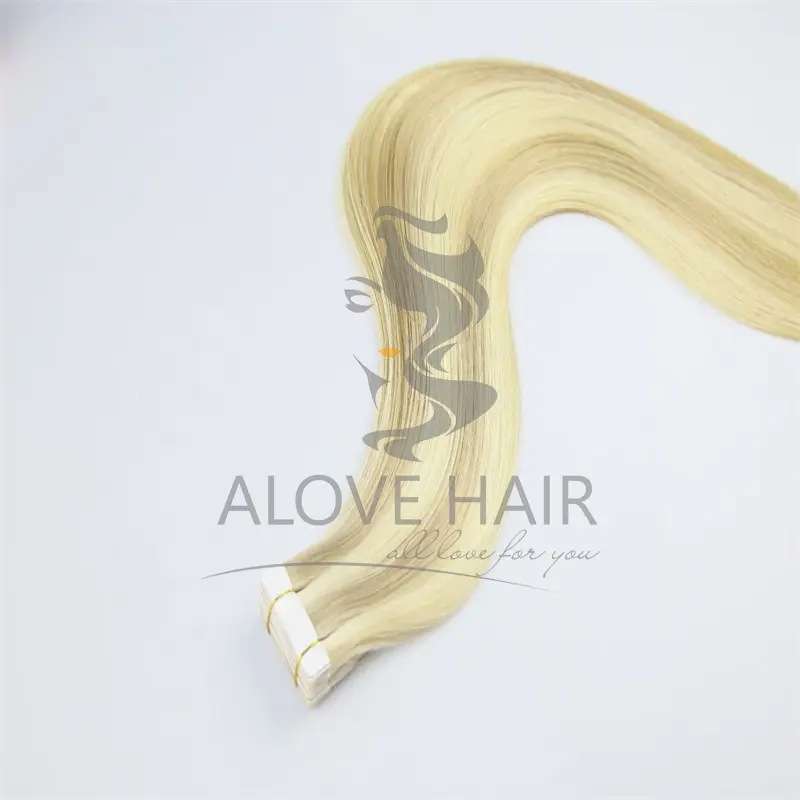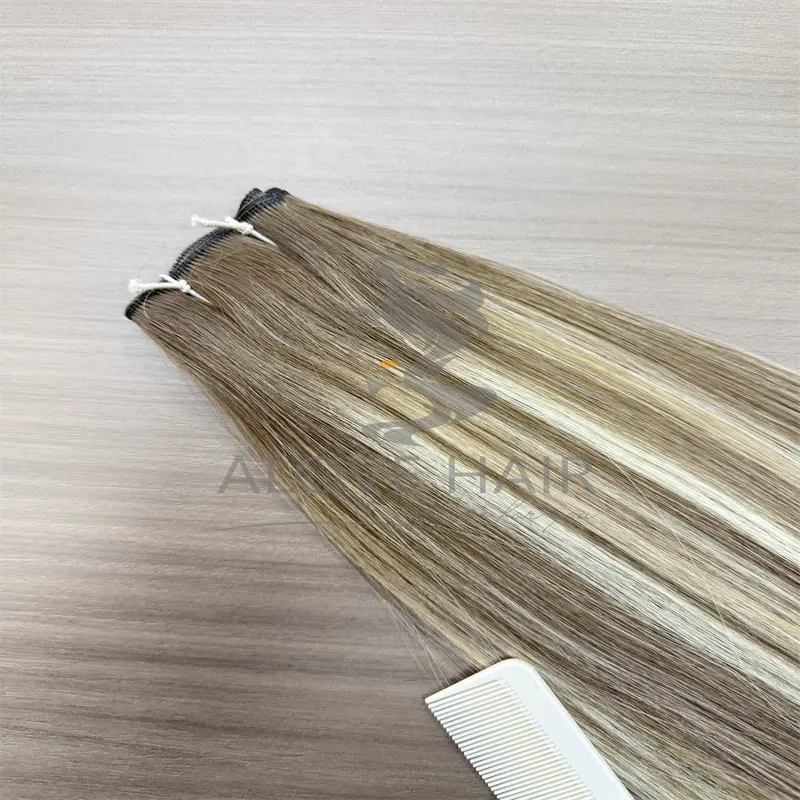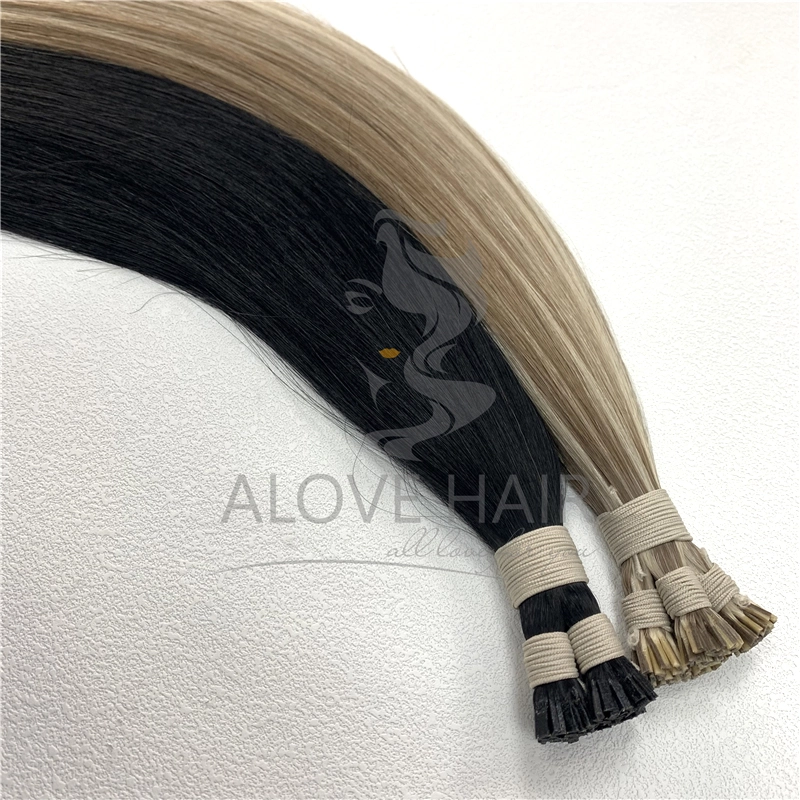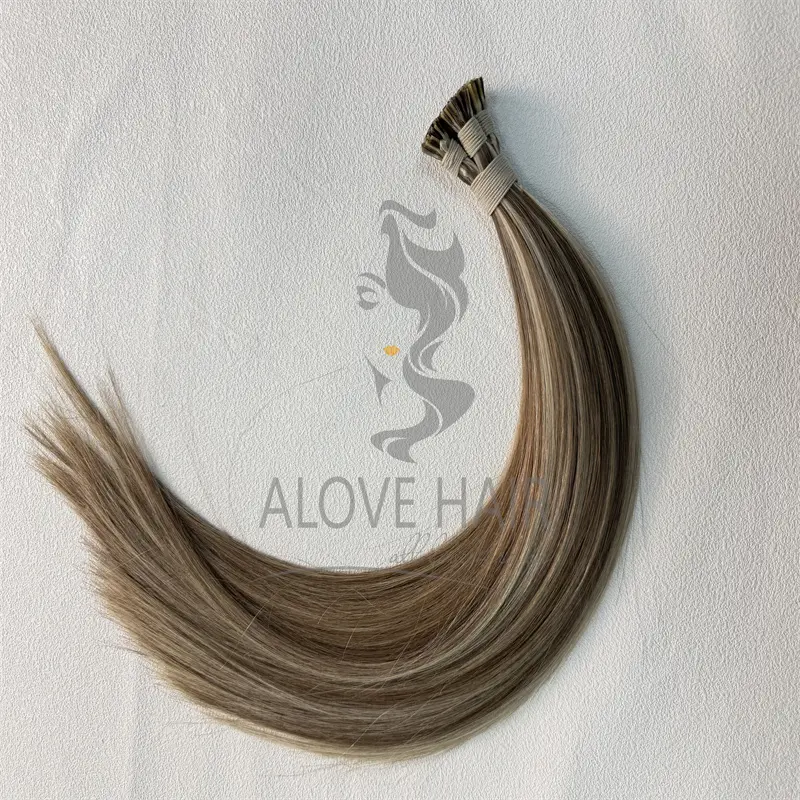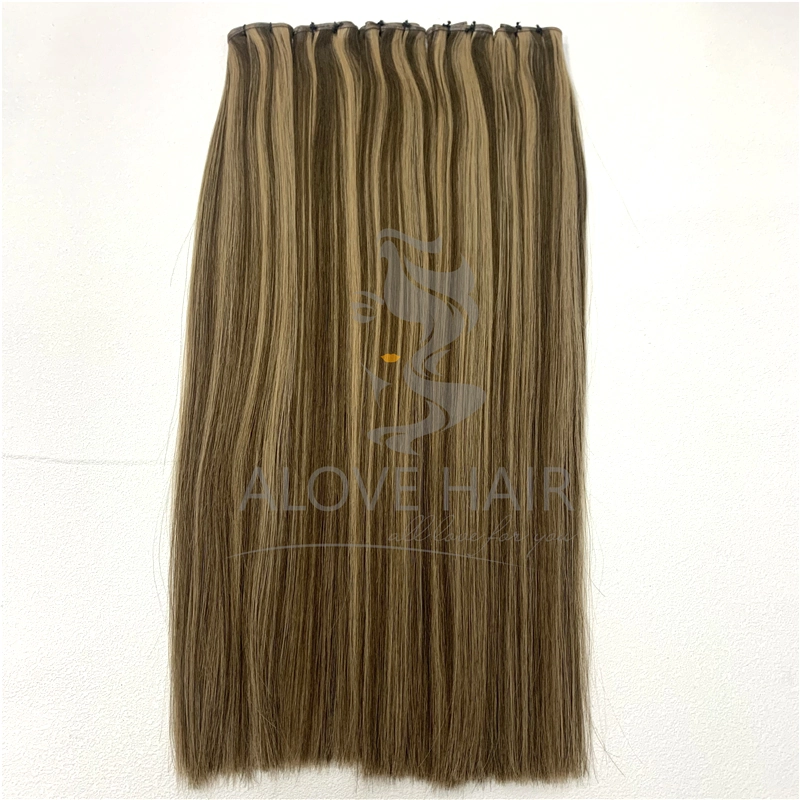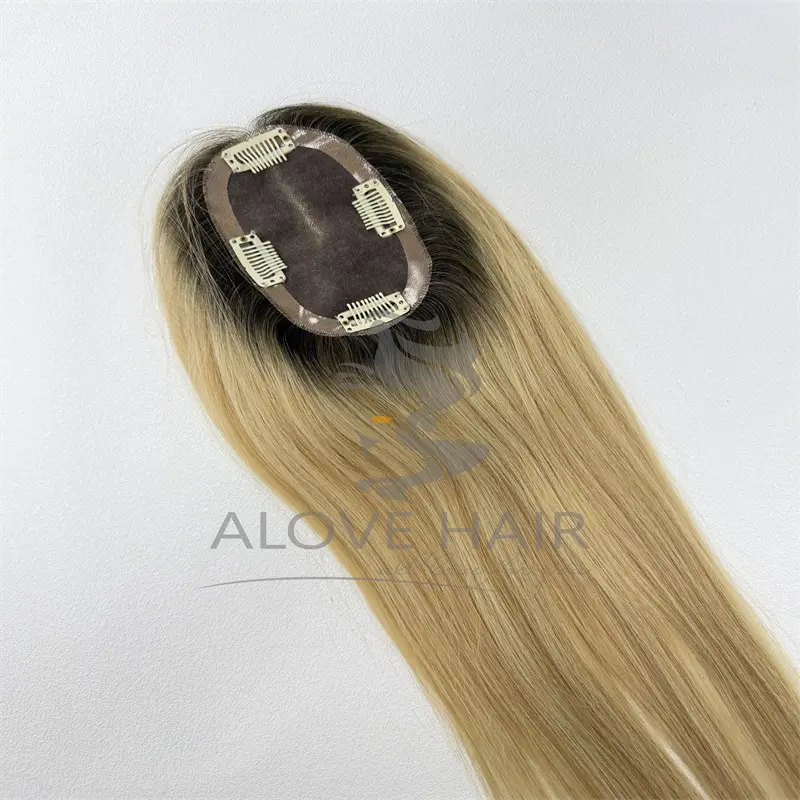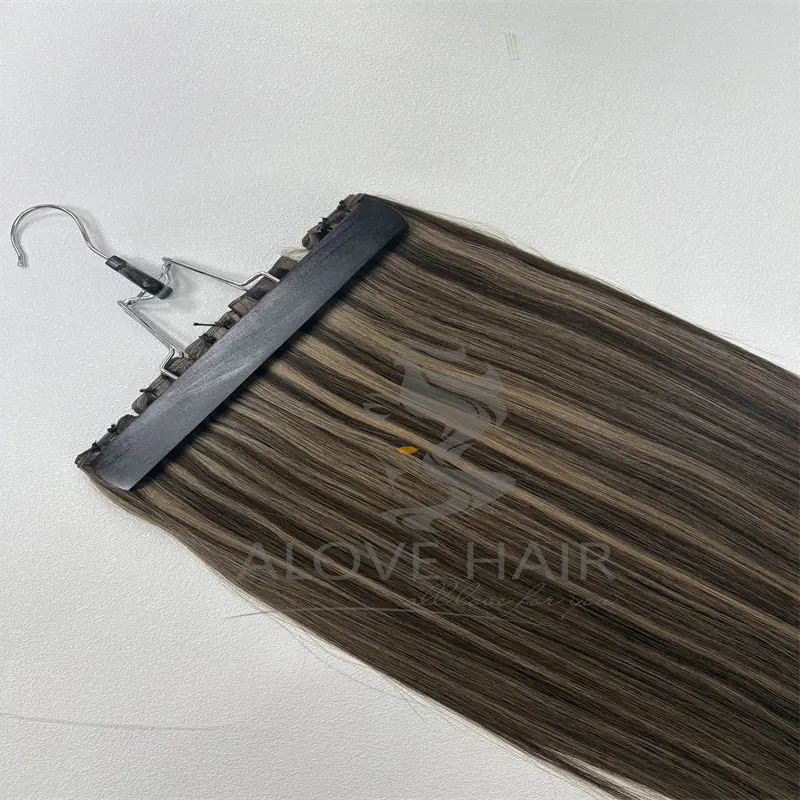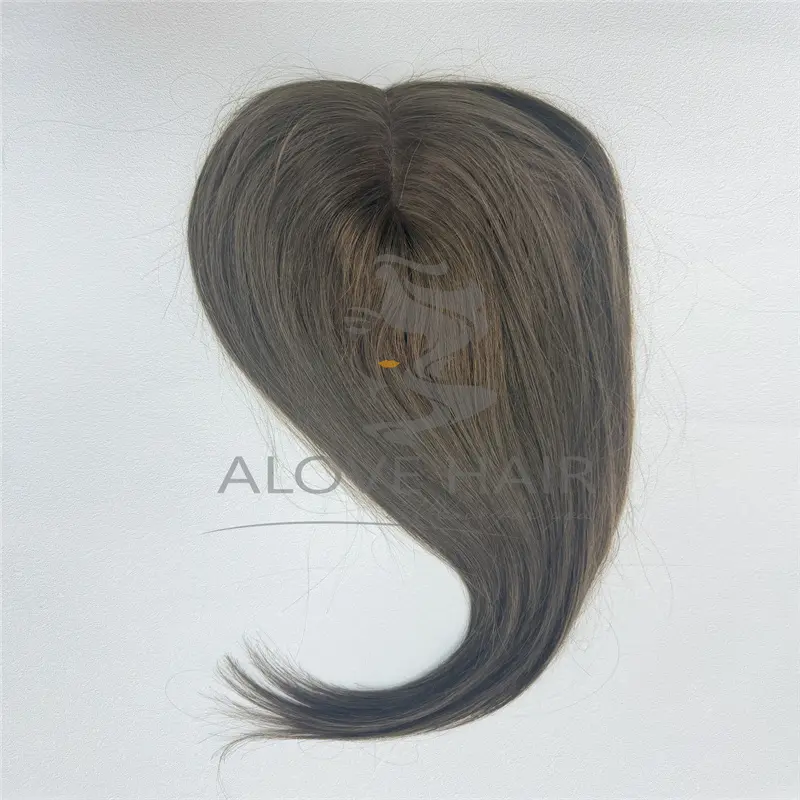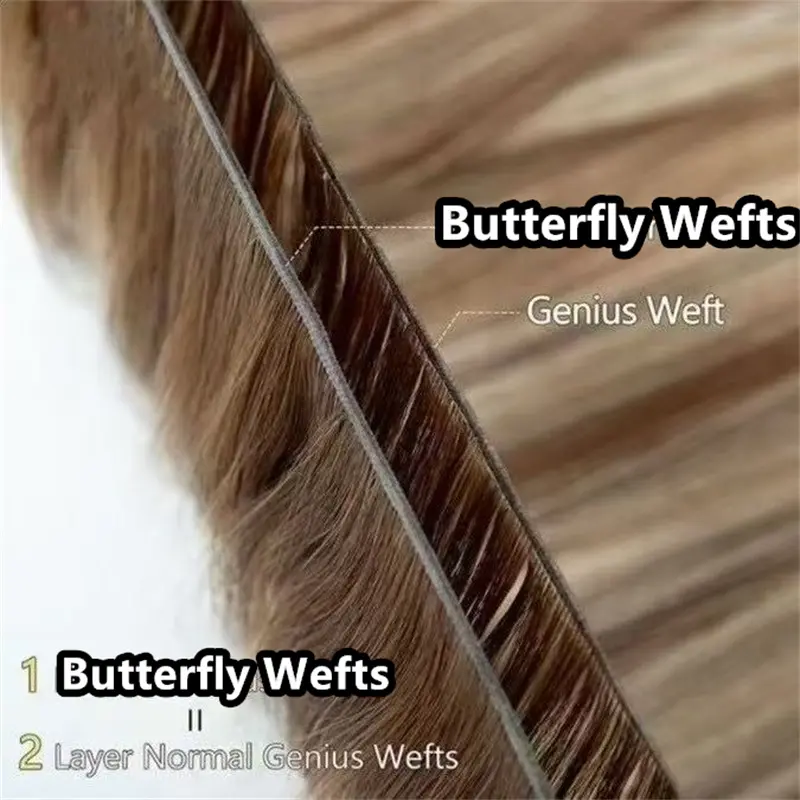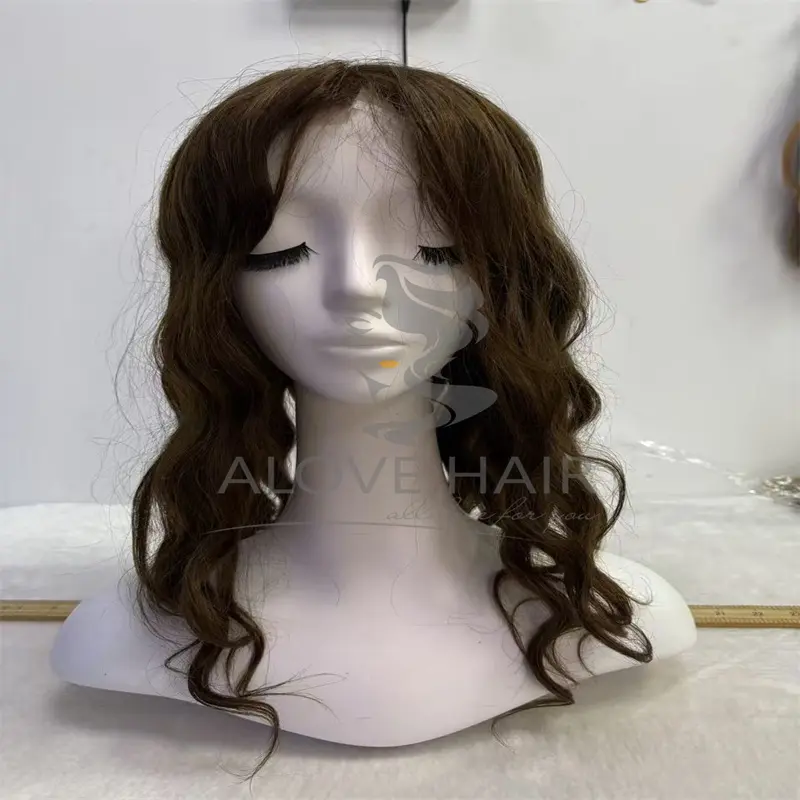Hair extensions have become one of the most popular beauty solutions for women seeking length, volume, or a quick transformation. Among the most widely used types are weft hair extensions and tape-in extensions. Both offer unique benefits, installation methods, and maintenance requirements, making it important to understand the differences before investing.
This article will explore weft hair extensions vs tape-in extensions in detail, including research data, pros and cons, cost comparisons, and practical advice. We will also highlight premium options from Qingdao ALOVE HAIR PRODUCTS Co., Ltd., a trusted supplier of professional-grade human hair extensions since the 1980s.
What Are Weft Hair Extensions?
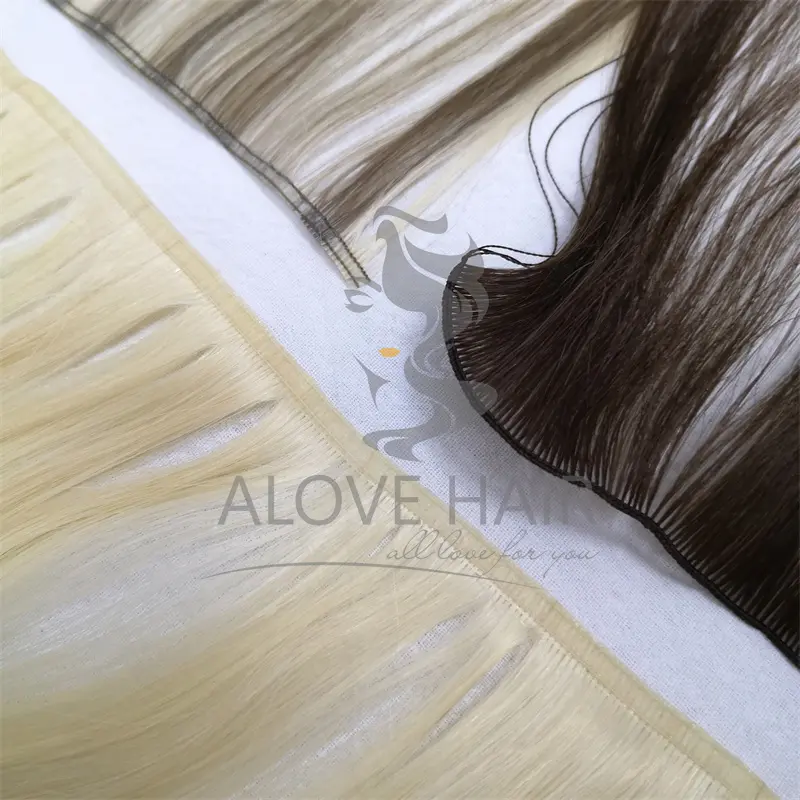
Weft hair extensions are bundles of hair sewn or “wefted” together at the top. These can be hand-tied, machine-made, or more advanced variations such as genius wefts and micro wefts. They are usually attached to the natural hair using methods like sewing onto braids, beads, or micro-rings.
Key Benefits of Weft Hair Extensions:
Long-lasting (up to 8–12 weeks per installation)
Reusable for over a year with proper care
Flexible application (can be sewn, beaded, or glued)
Ideal for thick or medium hair types
Natural look with seamless blending
What Are Tape-In Hair Extensions?
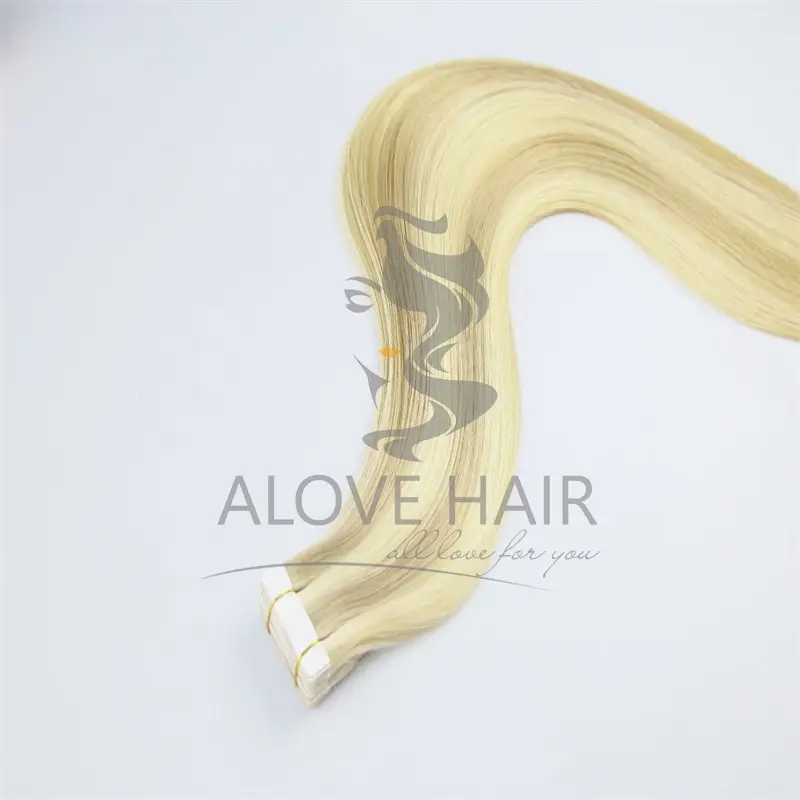
Tape-in extensions are pre-taped strips of hair applied by sandwiching sections of natural hair between two adhesive bonds. They are lightweight, flat, and usually last 6–8 weeks per application.
Key Benefits of Tape-In Extensions:
Quick installation (under 1 hour)
Lightweight and comfortable
Perfect for fine or thin hair
Reusable for 3–4 applications
Less damaging compared to some sew-in methods
Weft Hair Extensions vs Tape-In: A Comparative Data Table
To better understand the differences, here’s a side-by-side comparison of weft hair extensions vs tape-in extensions:
| Feature | Weft Hair Extensions | Tape-In Extensions |
|---|---|---|
| Installation Time | 1.5–3 hours (sewing/beading) | 30–60 minutes |
| Longevity per Install | 8–12 weeks | 6–8 weeks |
| Reusability | Up to 12 months | 3–4 applications |
| Best for Hair Type | Medium to thick hair | Fine to medium hair |
| Volume & Fullness | Very high | Moderate |
| Maintenance | Medium (washing, braiding, tightening) | Low to medium |
| Cost Range | $250–$800 | $200–$600 |
| Professional vs DIY | Professional recommended | Can be DIY but best with stylist |
Research Data: Consumer Preferences
Recent surveys in the beauty industry reveal strong demand for both methods. According to Statista (2023) and market reports from Grand View Research (2024):
45% of salon clients prefer tape-in extensions due to quick installation and comfort.
35% of clients choose weft hair extensions for longer-lasting results and added fullness.
20% of clients experiment with other types such as keratin tips or micro-links.
Table: Extension Popularity by Method (Survey of 1,000 U.S. Salon Clients, 2023)
| Extension Type | Client Preference (%) |
|---|---|
| Tape-In | 45% |
| Weft (Hand-Tied, Genius, Micro) | 35% |
| Keratin Tip | 10% |
| I-Tip/Micro Rings | 7% |
| Clip-In | 3% |
Cost Comparison: Weft vs Tape-In Extensions
Price plays a major role when choosing between weft hair extensions vs tape-in extensions.
Table: Average Cost Breakdown (Based on U.S. Salon Data, 2023)
| Category | Weft Extensions | Tape-In Extensions |
|---|---|---|
| Hair (100–150g) | $150–$400 | $100–$300 |
| Installation | $100–$300 | $100–$200 |
| Maintenance/Move-Up | $50–$150 | $50–$100 |
| Total Initial Cost | $250–$800 | $200–$600 |
Insight: While wefts may have a higher upfront cost, they often last longer and can be reused more times than tape-ins, making them cost-effective in the long run.
Practical Considerations for Choosing Between Weft and Tape-In
1. Hair Type and Texture
If you have fine or thin hair, tape-ins are lightweight and less visible.
If you have medium or thick hair, wefts provide fuller volume and better blending.
2. Lifestyle and Maintenance
Busy individuals who prefer quick appointments may find tape-ins more convenient.
Those who want durability and don’t mind longer salon sessions often choose wefts.
3. Styling Flexibility
Wefts offer more volume for curls, braids, and updos.
Tape-ins are discreet but may limit certain hairstyles where adhesive strips could show.
The Rise of Genius Wefts and Micro Wefts
Among modern weft types, genius wefts and micro wefts are game-changers:
Genius Wefts: Ultra-thin, cuttable, and shed-resistant wefts that blend seamlessly without bulk. Perfect for clients who want natural results without visible seams.
Micro Wefts: Lightweight wefts designed with smaller bonds, providing more flexibility and comfort for everyday wear.
Table: Traditional Wefts vs Genius & Micro Wefts
| Feature | Traditional Weft | Genius Weft | Micro Weft |
|---|---|---|---|
| Thickness | Medium to thick | Ultra-thin | Thin |
| Cutting Flexibility | Limited (can unravel) | Fully cuttable | Flexible |
| Comfort | Good | Excellent | Excellent |
| Best For | Thick hair | All hair types | Fine to medium hair |
Brand Spotlight: Qingdao ALOVE HAIR PRODUCTS Co., Ltd.
For professionals and salons looking for premium weft and tape-in extensions, Qingdao ALOVE HAIR PRODUCTS Co., Ltd. is a trusted partner.
Why Choose ALOVE Extensions?
100% Cuticle Intact Human Hair – Double drawn, silky, and tangle-free.
Expert in Colored Hair Extensions – With over 20 skilled workers specializing in bleaching and coloring, ensuring vibrant shades without ash baths.
Wide Product Range – From flat wefts, hand-tied wefts, genius wefts, and micro wefts to tape-ins, I-tips, and colorful extensions.
Global Reach – Supplying salons and stylists in the USA, UK, Canada, Australia, Germany, France, and beyond.
Tools & Accessories – Including pliers, tape rolls, removers, drawing cards, and custom packaging for professional stylists.
With a 90%+ customer retention rate, ALOVE has proven itself as a reliable wholesale supplier delivering both quality and affordability.
Safety & Hair Health Considerations
While both methods are considered safe, some research highlights potential risks:
A 2022 Journal of Dermatology study reported that 10–15% of women experience mild hair shedding after adhesive-based extensions like tape-ins.
Weft installations may cause tension alopecia if braided too tightly.
Proper installation by trained professionals and correct aftercare reduce risks significantly.
Conclusion: Which Is Better, Weft or Tape-In?
Both weft hair extensions and tape-in extensions have unique strengths.
Choose tape-ins if you want a fast, lightweight, and beginner-friendly option, especially for thin hair.
Choose wefts (especially genius or micro wefts) if you prefer long-lasting, voluminous, and customizable extensions.
For salon professionals and wholesale buyers, partnering with an experienced manufacturer is crucial. That’s where Qingdao ALOVE HAIR PRODUCTS Co., Ltd. stands out—delivering premium-quality extensions trusted worldwide for decades.
Whether you’re a stylist, salon, or distributor, ALOVE offers the perfect balance of quality, durability, and beauty in every strand. Welcome to contact us to order hair extension products.
